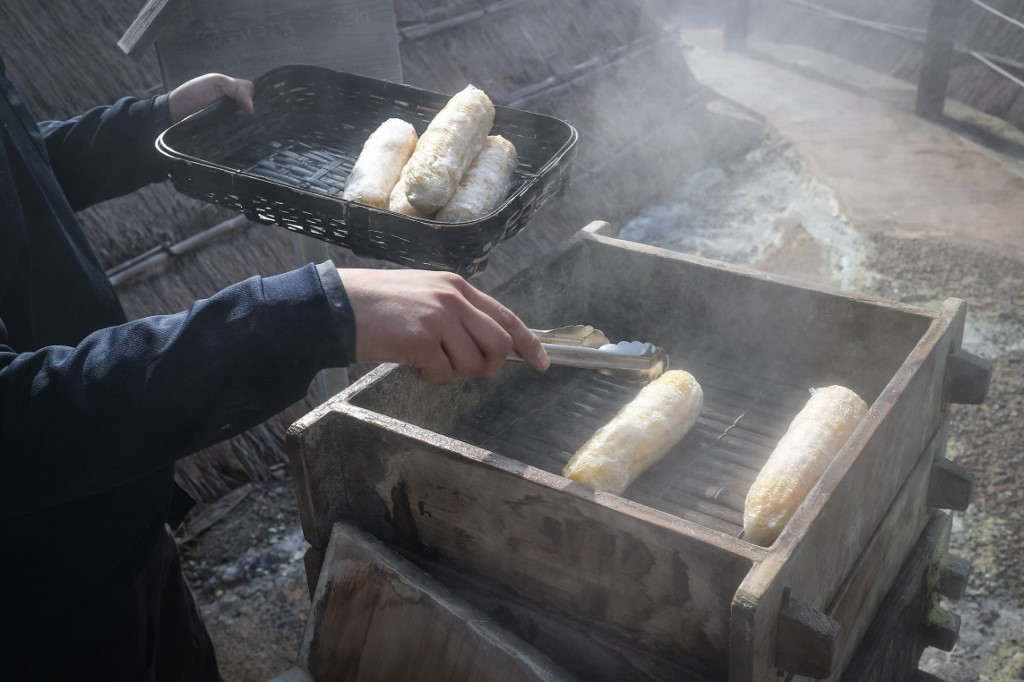Popular Reads
Top Results
Can't find what you're looking for?
View all search resultsPopular Reads
Top Results
Can't find what you're looking for?
View all search resultsSteam cuisine: cooking in Japan's hot springs
The geothermal sources that make Japan a haven for hot springs or onsen are also used to produce a range of delicacies.
Change text size
Gift Premium Articles
to Anyone
U
sing geothermal resources to generate electricity is a divisive prospect in Japan, but there is little disagreement about another use for it: natural steam for cooking.
The geothermal sources that make Japan a haven for hot springs or onsen are also used to produce a range of delicacies.
There's the "onsen tamago" -- eggs cooked in geothermally heated water at around 65 degrees (149 degrees Fahrenheit) to produce a relatively firm yolk with a creamy soft white.
And then there are small round cakes called "onsen manju", a popular snack sold at the approximately 2,900 hot spring locations across Japan.
Stuffed with red bean paste, they are cooked with the steam that rises from onsen water.
In Beppu, a small coastal town in Japan's southwestern Kyushu, an abundance of natural hot springs has given rise to a local speciality: "jigoku mushi" or "hell steaming".
Customers can buy meat, fish and vegetables on site at an onsen, and cook them in containers connected directly to the steam emanating from a nearby natural hot spring.
"This method of cooking was already being mentioned in local historical documents as far back as 200 years ago," Hitoshi Tanaka, president of Hyotan Onsen -- which offers "jigoku mushi" to its customers -- told AFP.
With steam at temperatures of 100-110 degrees Celsius (212-230 Fahrenheit), cooking generally takes no more than five to 10 minutes, "so the food retains its original colour", Tanaka explains.
The sulfur present in the steam imparts an "umami" to the meal, a flavour enhancer considered key to Japanese cuisine, and it contains iron, a trace element important for health, he added.
"You savour it with your eyes, you smell the steam, you hear the sound of the source of the hot spring: so you appreciate the food here with your whole body."
The technique has another benefit: no need for electricity or gas at a time when Japan, like many other countries, is dealing with soaring energy prices.











